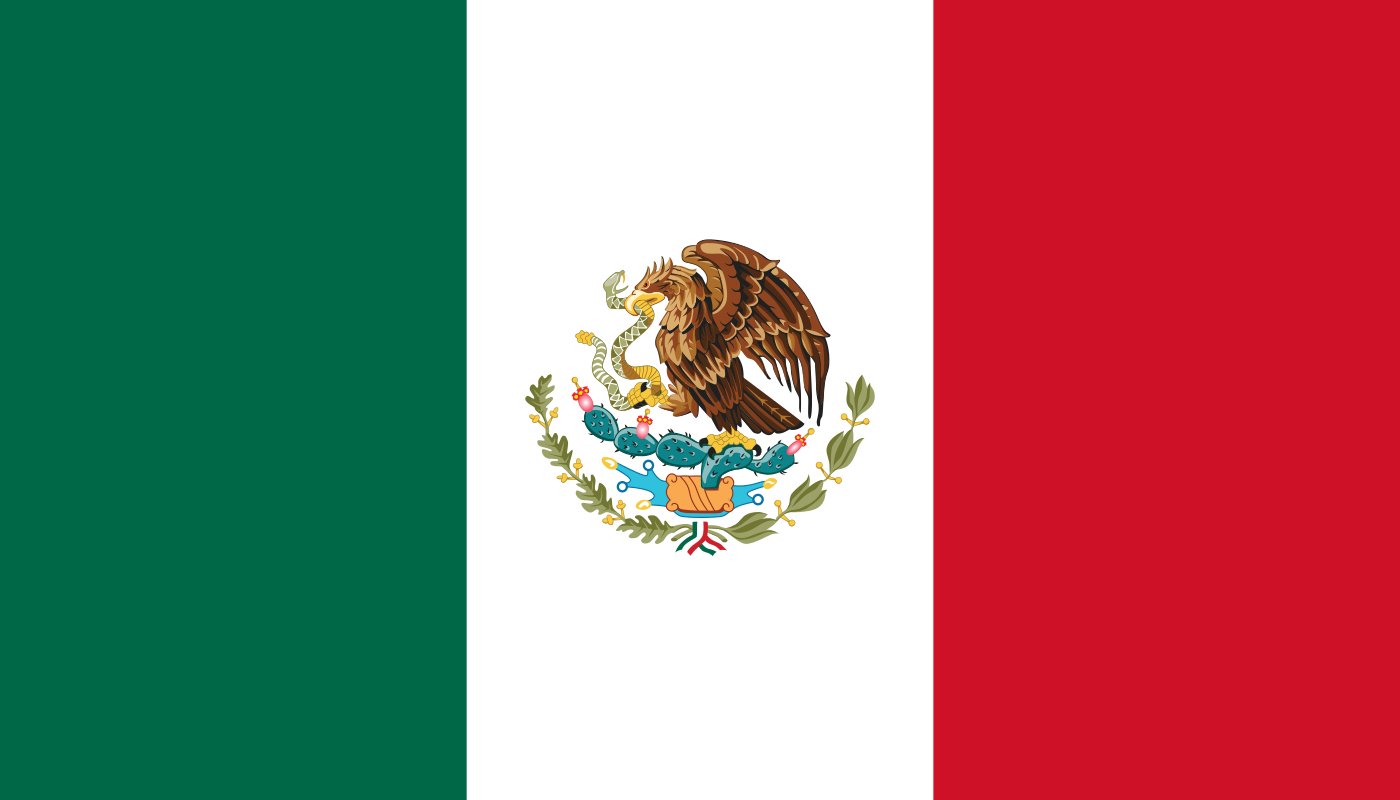Currency in Mexico: MXN Send & Spend FX Guide
 Resources for Expats, Travelers and Entrepreneurs Navigating Life and Trade in Mexico with the Mexican peso.
Resources for Expats, Travelers and Entrepreneurs Navigating Life and Trade in Mexico with the Mexican peso.

What's in this Mexico currency guide?
What currency is used in Mexico?
The official currency of Mexico (country code: MX) is the Mexican peso, with symbol Mex$ and currency code MXN.
What is a good Mexican peso exchange rate?
The BestExchangeRates.com currency comparison table below helps you see the total cost of your currency transaction by showing the exchange rates offered by different providers. It also makes it easy to spot potential savings from market-leading FX services compared to bank rates.
To see a full list of rates, enter your transaction type, currencies and amount then click ‘GET RATES’:
Loading rates...
|
|
|
Good things to know about the Mexican peso
The peso fortunes are connected to the oil market with oil high on the list of Mexico’s top exports.
US interest also affect the peso because Mexico holds high levels of dollar-denominated debt, which becomes more difficult to repay when US interest rates go up.
Cash remittances to South America have defied predictions of a large Covid related drop. The World Bank predicted that cash transfers from immigrants in the U.S. to family in Latin America would plummet 19% due to the pandemic however remittance levels ended up surging.
Cash remittances to Mexico can have an impact on the value of the peso. In Mexico's case, the majority of remittances come from Mexican workers in the United States. Remittances are an important source of income for many households in Mexico, and the money received can be spent on goods and services, thereby stimulating domestic demand and contributing to economic growth. A stronger Mexican economy can lead to a stronger peso.
When uncertainty increases, traders tend to move quickly out of emerging market currencies such as the Mexican peso first before looking for safe havens.
Contributing to a little more than 2% of the foreign exchange market daily turnover, the Mexican peso is the world’s second most traded emerging market currency, behind only the Chinese yuan. The peso is subdivided into 100 centavos.
The peso’s value is heavily influenced by commodities prices, particularly oil.
As an emerging market currency, the peso is considered riskier than currencies from major developed nations, which means that its value will fall against those currencies (especially JPY, CHF, USD, GBP and EUR) during periods of economic uncertainty or when global geopolitical risk is elevated, or during bouts of high market volatility.
Mexicans are mostly concerned with the value of their currency against the US dollar, since more than 80% of Mexican exports go to the US, with whom Mexico shares a free trade agreement.
The peso has consistently depreciated against the dollar since it's all-time high in 1972, when USD/MXN traded at just 0.01. By 1990, USD/MXN was at 2.7; at the end of 1994, after the currency was devalued by Mexico’s government, USD/MXN stood at 5.7; by the year 2000, the USD/MXN was meandering around 9.5; in 2009, the rate reached 15.6; and in January 2017, the peso reached an all-time low when USD/MXN traded as high as 22.03.
Here is what the Mexican peso looks like:
Coins: The Mexican peso is available in coins ranging in value from 1 centavo (1/100 of a peso) to 20 pesos. The coins feature a variety of designs, including the Mexican coat of arms and images of historical figures and cultural symbols.
Banknotes: The Mexican peso is available in banknotes ranging in value from 20 pesos to 1,000 pesos. The banknotes feature a variety of designs, including images of historical figures and cultural symbols.
For more MXN information check out our selection of Mexican peso news and guides.
Frequently Asked Questions
What currency should I use in Mexico?
The domestic currency in Mexico is the Mexican peso.
What is the Mexican peso currency code and symbol?
The three letter currency code for the Mexican peso is MXN — symbol is Mex$.
What does the Mexican peso look like?
Here is an example Mexican peso banknote:

Which countries use the Mexican peso?
It is the domestic currency in Mexico.
Is the Mexican peso a closed currency?
No, the Mexican peso is freely available and convertible. See guide: What is a closed currency?
What are equivalent amounts of USD and MXN?
Here are some popular conversion amounts for USD to MXN (US dollar to Mexican peso)*.
| USD | MXN |
|---|---|
| $ 55.69 | Mex$ 1,000 |
| $ 278.46 | Mex$ 5,000 |
| $ 1,114 | Mex$ 20,000 |
| $ 5,569 | Mex$ 100,000 |
More amounts
*Converted at the current USDMXN interbank exchange rate. Calculate actual payout amounts for Send Money and Travel Money exchange rates.

Travel money for Mexico
Using Wise for Mexican peso travel money is a smart choice for savvy travelers. With its competitive exchange rates and low fees, Wise allows you to convert and manage multiple currencies effortlessly.
Be careful when using your own bank's Debit/Credit Card, as your bank may also charge an extra 3% as an “Overseas Transaction Charge” plus “Overseas ATM” fees for withdrawing cash on top of the standard Visa/Mastercard 2.5% from market mid-rate.
For card purchases, if you are offered a choice of currencies always select to Pay in Mexican peso otherwise you will typically get much worst dynamic currency conversion (DCC) exchange rates.
If you really want Mexican peso cash before departure, you can save money by ordering online. You generally get better rates and can pick up the MXN cash locally or even on travel day at the airport.
Mexico: Travel Guide
Traveling to Mexico requires careful financial planning to ensure a smooth and cost-effective experience. Here's a comprehensive guide to help you navigate currency considerations and manage your money effectively during your visit.

Most people who visit Mexico are enchanted by its stunning beaches, endless sunny weather, and rich cultural heritage. Mexico is a vast and varied country, offering something for everyone. Whether you’re looking for a relaxing beach vacation, an adventure-filled trip, or a glimpse into centuries of history, you’ll find it all in Mexico.
Travelers should be aware that Mexico is a developing country, and should take precautions against crime and violence. Nevertheless, Mexico is a popular destination for travelers and expats alike, and its friendly people and beautiful scenery make it well worth a visit.
Best things to do and see in Mexico
Some of the best things to do and see in Mexico include visiting ancient ruins such as the Mayan site of Chichen Itza, exploring the colonial city of Mexico City, visiting the beaches of the Riviera Maya, and going scuba diving or snorkelling in the country's many stunning underwater cenotes. Mexico is also home to a number of beautiful national parks such as the Monarch Butterfly Biosphere Reserve and the Sierra de San Pedro Martir National Park.
Top Travel tips for Mexico
1. Safety is always the number one priority when traveling, so research your destination thoroughly and be aware of your surroundings at all times.
2. Be sure to pack appropriate clothing and sunscreen as the sun can be very strong in Mexico.
3. Mexicans are renowned for their hospitality, so be friendly and respectful to everyone you meet.
4. When it comes to food, be adventurous and try as many different dishes as you can.
5. Finally, have fun and enjoy your time in this beautiful and culturally rich country.
Is it safe in Mexico?
You should always consult the U.S. State Department's travel advisory for Mexico before traveling. Although most areas of Mexico are safe, there are some areas that are dangerous.

Everyday Costs in in Mexico
How much does it really cost to live, work, or travel in Mexico? Here's what to expect for daily expenses and expat living.
Currency Guide for Mexico (ISO Code: MX)
For travelers planning a mid-range stay in Mexico, it’s advisable to budget around $500 to $700 USD for a one-week trip. This amount allows for a comfortable experience including dining, accommodation, and local transportation. In general, the country is quite affordable, offering good value compared to other major destinations. Here’s a snapshot of typical daily expenses you can expect while in Mexico (prices are in Mexican Pesos, MXN):
- 🍽️ Meal at a local restaurant: 150-300 MXN
- ☕ Coffee: 30-50 MXN
- 🚍 Public transport fare: 10-15 MXN
- 📶 Prepaid SIM card: 250-500 MXN
- 🛏️ Budget hotel or Airbnb: 500-1000 MXN
Overall, Mexico can be classified as an affordable country to visit. When compared to the United States, expenses in Mexico can be roughly 30-50% lower, making it an attractive getaway. When contrasted with the UK, you’ll find that dining out and accommodations in Mexico provide significant savings, as UK prices can be substantially higher.
For Expats in Mexico
For expats living in Mexico, typical monthly living costs can range from 15,000 to 25,000 MXN, depending on lifestyle and location. Major expenses include rent, utilities, groceries, and transportation. Urban centers such as Mexico City might skew towards the higher end of that range, while smaller towns may offer more budget-friendly options.
When it comes to banking and handling financial transactions, it’s common to use functionality-rich banking apps alongside debit and credit cards. Visa and Mastercard are widely accepted, but it’s recommended to notify your bank of your travel plans to avoid potential holds on your cards. For sending and receiving money, online transfer services like Wise or OFX often provide better exchange rates and lower fees than traditional banks, making them an excellent choice for both expats and travelers. Exchanging money locally can sometimes result in higher fees, especially at airports or tourist hotspots, so it's typically better to plan ahead and utilize digital solutions for financial transactions.
USD/MXN Market Data
The below interactive chart displays the USD/MXN change and UP📈 DOWN📉 trends over the past 1 Year.

Recent Mexican peso Market News
December 27, 2025
Key Developments Affecting the Mexican Peso (MXN) in 2026:
1. Stable Exchange Rate Forecasts: Analysts anticipate the MXN will trade within the 16.00–22.00 per U.S. dollar range in 2026, maintaining the pattern established since July 2015. (investing.com)
2. UBS's Optimistic Outlook: UBS has revised its USD/MXN projections, expecting the peso to strengthen due to Federal Reserve easing policies. The forecasted exchange rates are:
- Q1 2026: 18.4
- Q2 2026: 18.7
- Q3 2026: 18.5
- Q4 2026: 18.2
3. Monex's Projection: Monex forecasts the MXN to end 2025 at 18.15 per U.S. dollar and to trade at around 19.00 by the end of 2026, anticipating fewer cuts to the benchmark interest rate by Banxico and a recovery in the economy. (monex.com.mx)
4. Potential Risks: Analysts caution that factors such as slower economic activity, weaker remittances, and potential divergence between Mexico's central bank (Banxico) and the U.S. Federal Reserve could lead to a slight depreciation of the peso in 2026. (investing.com)
These insights suggest that the Mexican Peso is expected to remain relatively stable in 2026, with slight fluctuations influenced by domestic and international economic policies.
For a more detailed analysis, you might find this video informative:
Will the dollar rise or fall? What no one is telling you about the Mexican peso in 2026
For more MXN information read our News and guides to the Mexican peso.
Send Money to Mexico - Best Rates
To get a good (and fair) exchange rate when sending money to Mexico you need to find and compare exchange rates for International Money Transfers (IMTs).
The available FX rates for sending money abroad can be very different to the mid-market (wholesale) rate which you see reported online and in the News.
You should especially compare your own bank's exchange rates to those available from Money Transfer specialists to see how much you can save - we make that calculation easy in the below table.
Get a better deal for foreign transfers to Mexico
When sending money to Mexico it’s important to compare your bank’s rates & fees with those we have negotiated with our partner money transfer providers. To get a better deal you should follow these 4 simple steps :
- Open an account with a BER reviewed FX provider (id docs may be required)
- You specify the local or Mexican peso amount you want to transfer
- Make a local currency domestic transfer for the requested amount to the provider's bank account in your country
- Once your funds are received by the provider the converted MXN amount will be transfered to the recipient account you specify in Mexico.
Use the above calculator to compare the exchange rates of FX specialist providers rates versus your bank's standard rates you can hopefully save around 5% and maybe more - end result is more Mexican peso deposited into the recipient bank account and less margins and fees kept by the banks!

Managing money while living and working in Mexico
Managing your money effectively while living and working abroad can be challenging, but there are several steps you can take to ensure that your finances are in order.
Understand Mexican peso currency exchange rates: Exchange rates can have a big impact on your finances, so it is important to keep an eye on the MXN exchange rate and consider using a money transfer specialist or a credit card that does not charge foreign transaction fees to get the best exchange rate.
Use a local Mexican peso bank account: A local MXN bank account can make it easier for you to manage your finances and pay bills while you are in Mexico. It may also be more convenient to use a local MXN bank account to make purchases and withdraw cash.
Research local laws and regulations: It is important to understand the local laws and regulations that apply to financial transactions in Mexico. This can help you avoid legal issues and ensure that you are complying with local requirements.
Consider the tax implications: It is important to understand the tax implications of living or doing business in Mexico. This can help you plan your finances and ensure that you are paying the correct amount of tax.
Seek financial advice: If you are unsure of how to manage your finances in Mexico, it is a good idea to seek the advice of a financial professional who is familiar with the local financial system. This can help you make informed decisions and avoid financial pitfalls.
We have put together some key points to help managing your money effectively, you can reduce financial stress and enjoy your experience living or doing business in Mexico.

Is Mexico a good place for Americans to retire to?
Mexico can be a good place for Americans to retire to, as it offers a lower cost of living and a warm climate in many areas. However, it is important to keep in mind that Mexico has its own unique culture and way of life, which may take some getting used to.
Additionally, it is important to be aware of the potential risks and hazards that can come with living in a foreign country, such as crime and political instability. It is also important to research the area you plan to retire to and understand the local laws and customs. Consulting with a financial advisor and attorney before making any decisions is also advisable.
What is the cost of living in Mexico?
There is no definitive answer to this question as the cost of living in Mexico can vary greatly depending on the specific location and lifestyle of the individual. However, according to Numbeo.com, the average cost of living in Mexico City is approximately $1,200 per month, which is significantly lower than many other major cities around the world.
How is the expat life in Mexico?
The expat life in Mexico can be both enjoyable and challenging. Many expats find the relaxed lifestyle and friendly locals to be a refreshing change from their home countries. At the same time, living in a foreign country can be difficult, and there are a few things expats should be aware of before making the move.
Any laws in Mexico that foreigners should be aware of?
There are a few laws in Mexico that foreigners should be aware of. First, it is illegal to drink alcohol in public places. Secondly, it is also illegal to drive under the influence of alcohol. Lastly, it is important to note that there is a nationwide smoking ban in place, which prohibits smoking in all public places, including bars and restaurants.
What is doing business like in Mexico?
The business environment in Mexico is generally favorable for foreign investors. The country has a large pool of skilled labor, and production costs are relatively low. Additionally, the Mexican government offers a number of incentives to encourage investment in certain sectors. However, crime and corruption are significant problems in Mexico, and the business environment can be challenging for companies operating in the country.
How is the economy in Mexico?
The economy of Mexico is a developing market economy. It is the 15th largest economy in the world in nominal terms and the 11th largest by purchasing power parity, according to the International Monetary Fund. Mexico is a member of the Organization for Economic Co-operation and Development and the G20.
